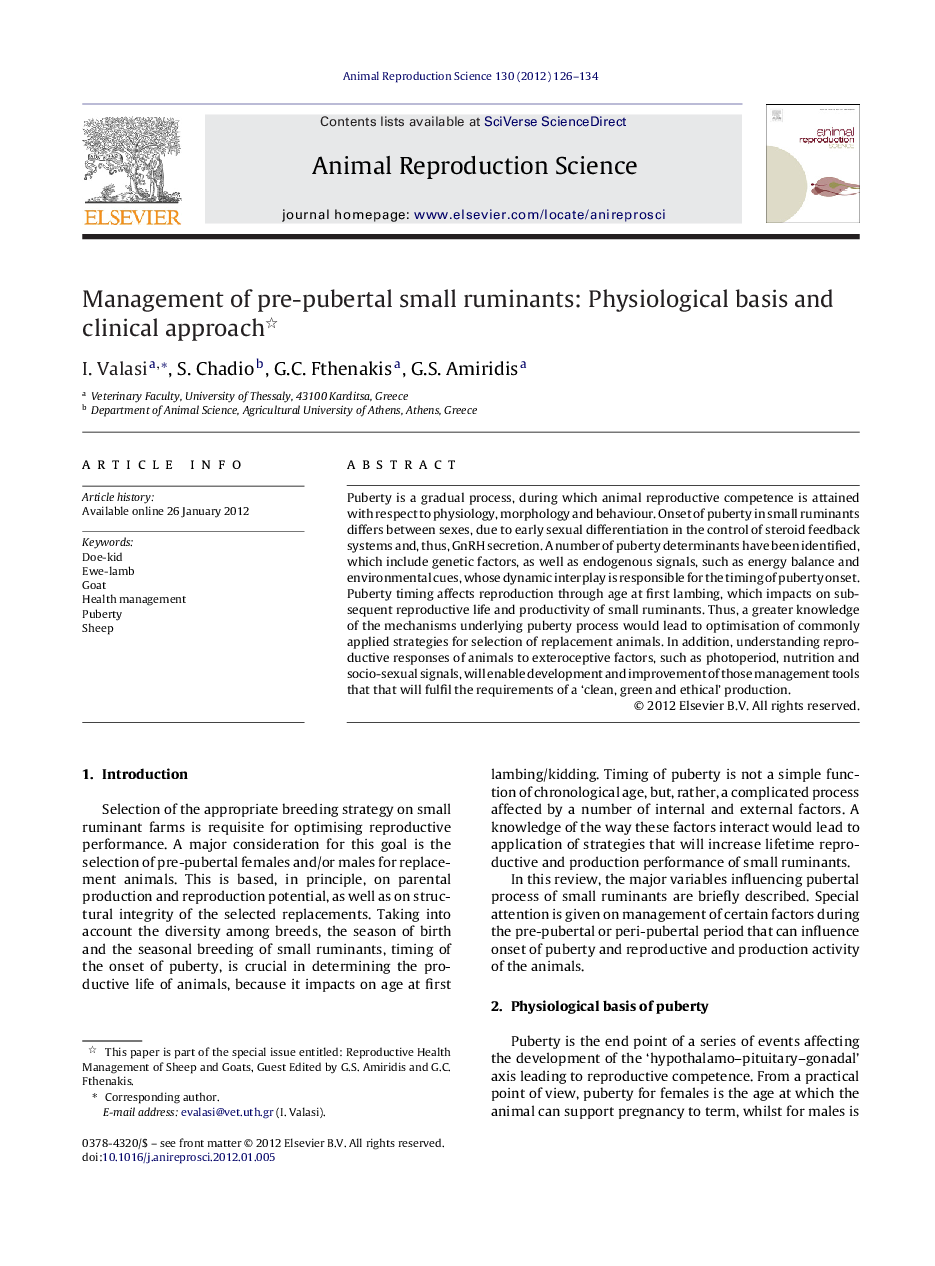| Article ID | Journal | Published Year | Pages | File Type |
|---|---|---|---|---|
| 2073265 | Animal Reproduction Science | 2012 | 9 Pages |
Puberty is a gradual process, during which animal reproductive competence is attained with respect to physiology, morphology and behaviour. Onset of puberty in small ruminants differs between sexes, due to early sexual differentiation in the control of steroid feedback systems and, thus, GnRH secretion. A number of puberty determinants have been identified, which include genetic factors, as well as endogenous signals, such as energy balance and environmental cues, whose dynamic interplay is responsible for the timing of puberty onset. Puberty timing affects reproduction through age at first lambing, which impacts on subsequent reproductive life and productivity of small ruminants. Thus, a greater knowledge of the mechanisms underlying puberty process would lead to optimisation of commonly applied strategies for selection of replacement animals. In addition, understanding reproductive responses of animals to exteroceptive factors, such as photoperiod, nutrition and socio-sexual signals, will enable development and improvement of those management tools that that will fulfil the requirements of a ‘clean, green and ethical’ production.
